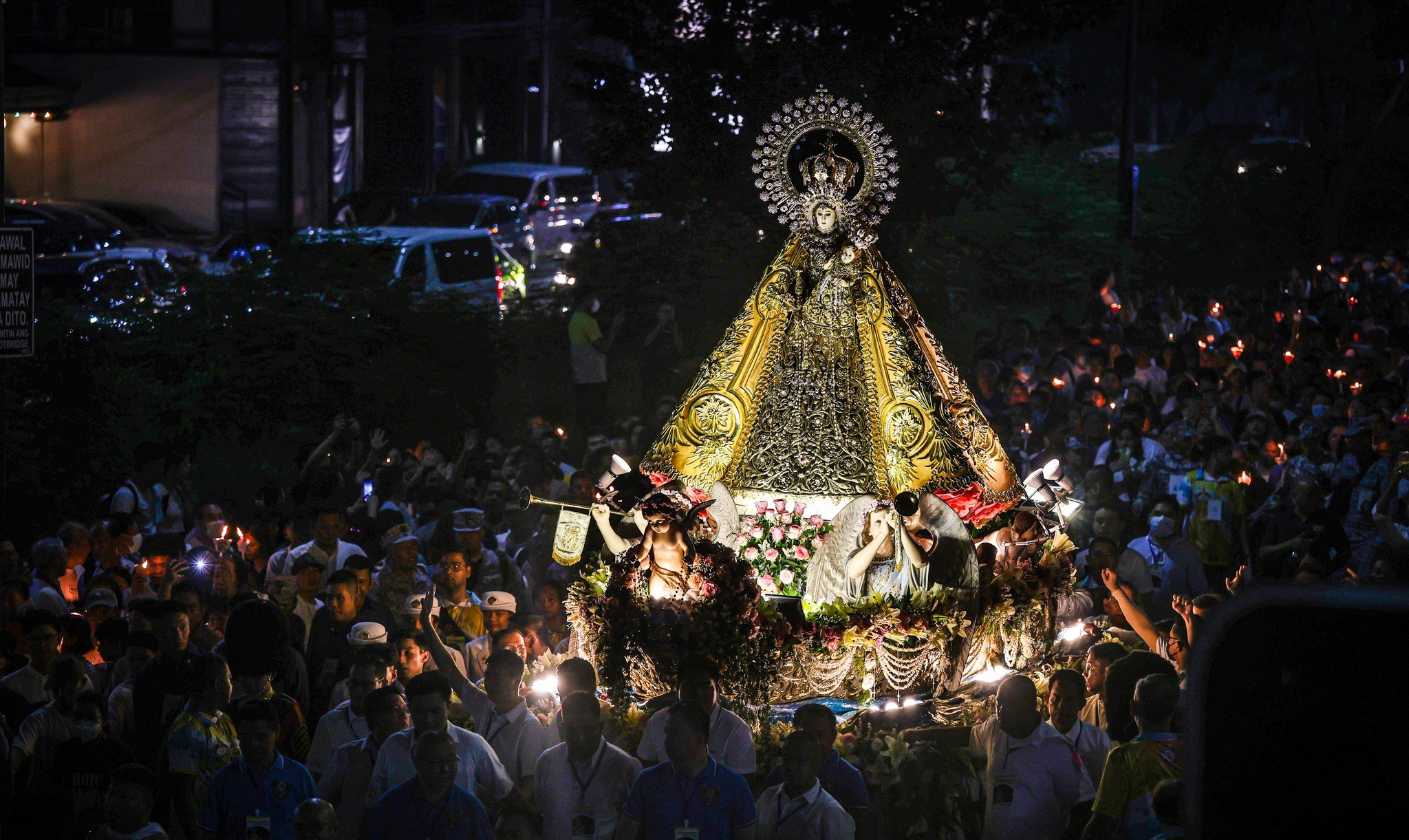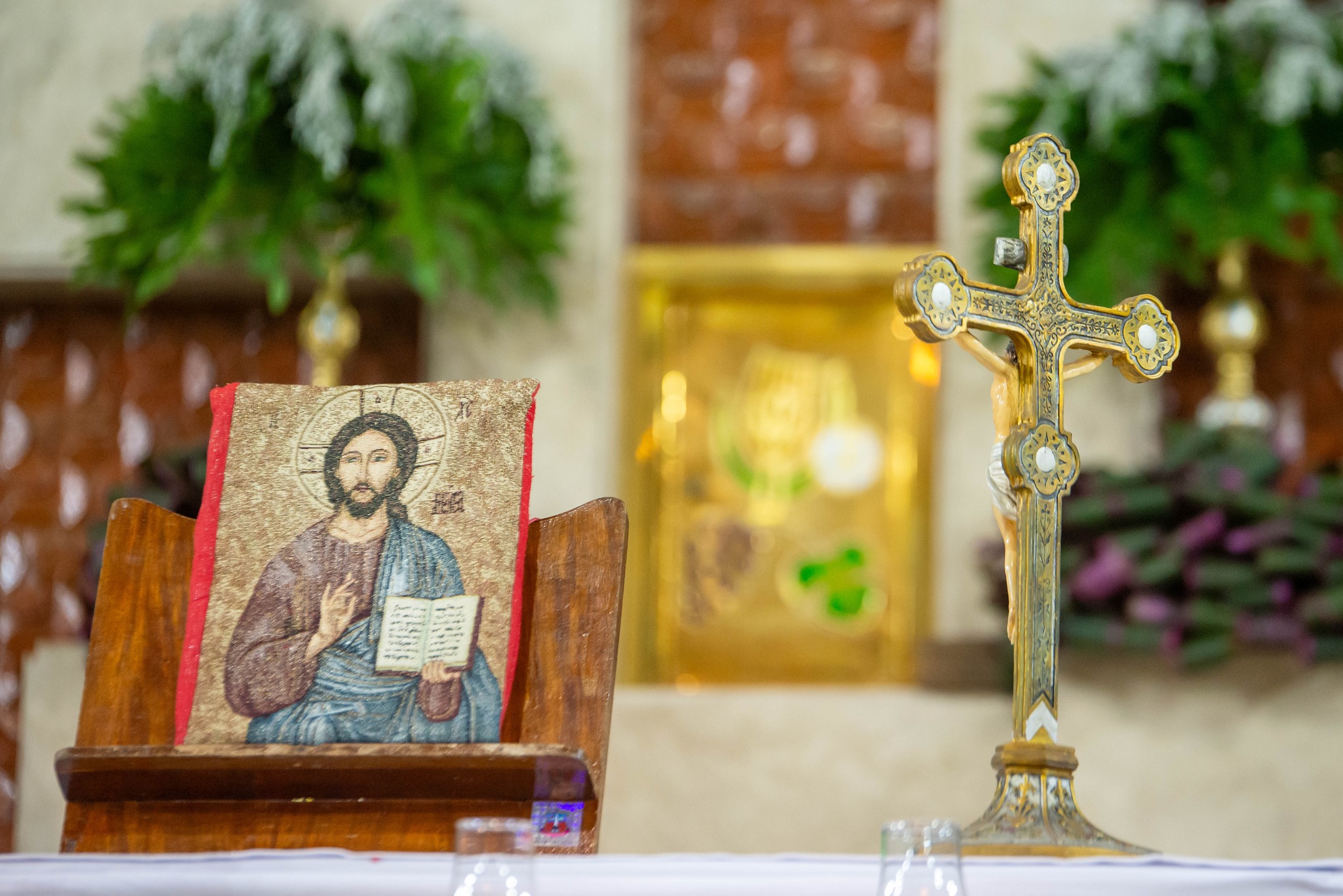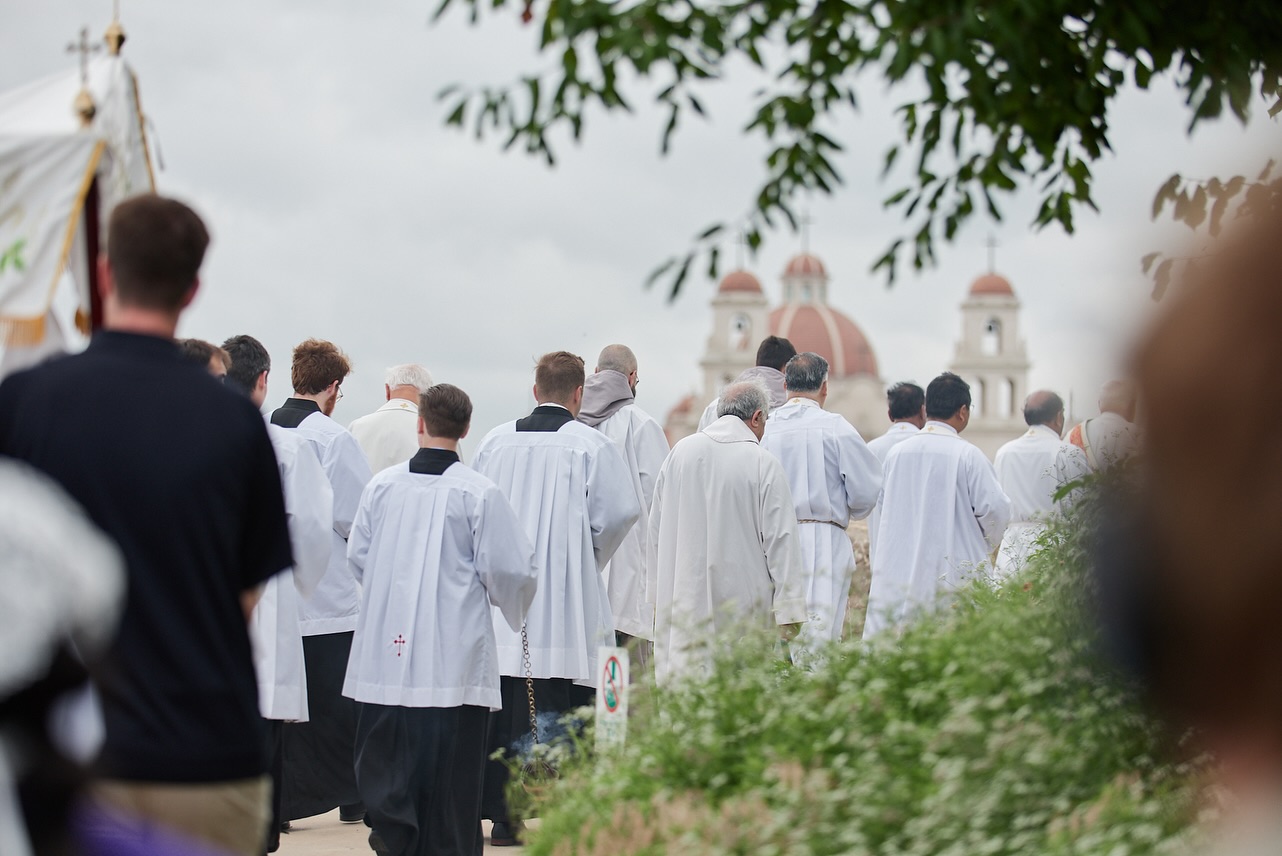FAUSTO GOMEZ OP
There are many avocations of Mary, Our Lady, the Mother of Jesus, the Son of God, and our Mother. One of the most popular ones is: Our Lady of the Rosary.
The Rosary (from rosarium, or “rose garden”) was partly founded and much promoted by St. Dominic (1170-1221), to whom is attributed the Rosary as the “Angelic Psalter”: 150 Hail Marys. I remember the story from the Dominican tradition: once, St. Dominic was a bit downcast: his preaching against the heretics was not going well at that particular time. Mary appeared to him and told him: Why don’t you try the angelic salutation Hail Mary. It will make fertile the souls of believers. He tried – and succeeded.
By the start of the 14th century, the 150 Hail Marys were divided into 15 decades of 10, each preceded by an Our Father. Pope Pius V added to the 150 Hail Marys, 150 Holy Marys, and officially approved the Rosary as a Marian devotion, and strongly recommended its recitation to all Catholics. Pope Leo XIII declared that the month of October be dedicated to the Holy Rosary (Encyclical Supremi Apostolatus).
The Rosary is the classical form of devotion to Mary. It has been described as an excellent prayer by Leo XIII, a compendium of the entire Gospel by Pius XII, and a beautiful garden of flowers by St. John XXIII. Inviting us to pray the Rosary, Pope Francis tells us that “The Rosary is a simple and effective prayer.”
The saints have great devotion to the Rosary of Mary, including saints Francis, Teresa of Avila, Ignatius of Loyola, Alphonsus Maria Liguori, Louis Grignion de Montfort and Saint Teresa of Calcutta. St. Padre Pio was asked: How do you learn to pray? His answer: Pray Rosary always. Our Lady appeared to the little shepherdess Bernadette at Lourdes dressed in white with the Rosary in her hands. Mary herself prayed the Rosary with her in one of her apparitions. Similarly, Our Lady of Fatima.
In his wonderful Apostolic Letter Rosarium Virginis Mariae, RVM (The Rosary of the Virgin Mary, October 16, 2002), St. John Paul II proposed the initiative of adding the five luminous mysteries to bridge the gap between the joyful mysteries of the infancy of Jesus and the sorrowful mysteries of his passion and death that are followed by the glorious mysteries (cf. RVM, 19).
Through the beads (the decades), we go to the prayers (the Our Father, the Hail Mary and the Holy Mary, and the Glory Be), and through the prayers, to the twenty mysteries, which take us to encounter Mary and Jesus: Our Rosary is a ladder and we climb it to meet Our Lady and our Lord. It is not merely a vocal prayer (although no true vocal prayer is only vocal!), but also a contemplative prayer. Without contemplation, the Rosary is a body without a soul (St. Paul VI Marialis Cultus, 1974). The Rosary leads us to the contemplation of the mystery of salvation in which the Virgin Mary is intimately associated with the work of her Son” (Dominican Constitution).
We may pray the Rosary focusing on the divine mystery we are contemplating, Sometimes, on the meaning of the vocal prayers we are reciting. At other times, just listening to the voice of silence, the voice of God. In some places and communities, pauses of silence or the reading of the appropriate biblical text initiate every mystery (cf. RVM, 30-31).
What is the goal of our devotion to the Rosary of Mary? Jesus, the Son of God, who is the end of all our devotions (cf. LG, 66). The goal of our recitation of the Rosary, then, is Jesus. Saint Louis-Marie Grignion de Montfort wrote: “If devotion to Our Lady distracted us from our Lord, we would have to reject it as an illusion of the devil” (True Devotion to Virgin Mary). The goal of praying the Rosary, then is not just learning what Jesus taught us, but “learning him,” learning from Mary to “read Christ,” to discover his secrets, and to understand his message (RVM, 14).
As Christians, we are asked by the Mother Church to pray the Rosary, most especially in dangerous times, like ours; to recite the Rosary, in particular for our families and for peace in the world.
How is our devotion to the Rosary of Mary? How is our private and/or our common recitation of the Rosary? Certainly, to pray the Rosary well is a wonderful experience, as it is made clear in the lives of our saints. Indeed, its devout recitation produces good fruits, the fruits of holiness: love of God and neighbor, sensitivity towards the needy and poor, humility, love of the cross, forgiving others and compassion.
We are told that St. Albert the Great, who lived a long and productive life, when he was old asked God often: Nunquid durabo? Will I endure – till the end? Before his end, Albert the Great could only pray the Hail Mary. This impressed very much theologian Karl Rahner, who was also devoted to the Rosary and considered it a great blessing. Lay Dominican Saint Bartolo Longo (1841-1926), “Apostle of the Rosary,” dedicated his life to spread the devotion to the Rosary and to serve the poor – an offshoot of his Marian devotion (cf. John Paul II, Rosarium Virginis Mariae, 8). Fr. Lagrange, the famous French biblical scholar did three things every day: study the Bible, read the newspaper, and pray the Rosary.
I remember a devout Dominican missionary in Batanes Islands, Philippines. After his ordination to the priesthood, he always had with him, in his room: the Bible, the Breviary of the Divine Office, the Summa Theologiae of St. Thomas Aquinas, and the Rosary. As he became old and his eyesight started to fail him, he gave up first the Summa, second the Bible, third the Divine Office. Only the Rosary accompanied him up to his last breath.
Let us pray and promote the Rosary. Its beads are good company for the journey of life.
Our Lady of the Rosary, pray for us!


 Follow
Follow


